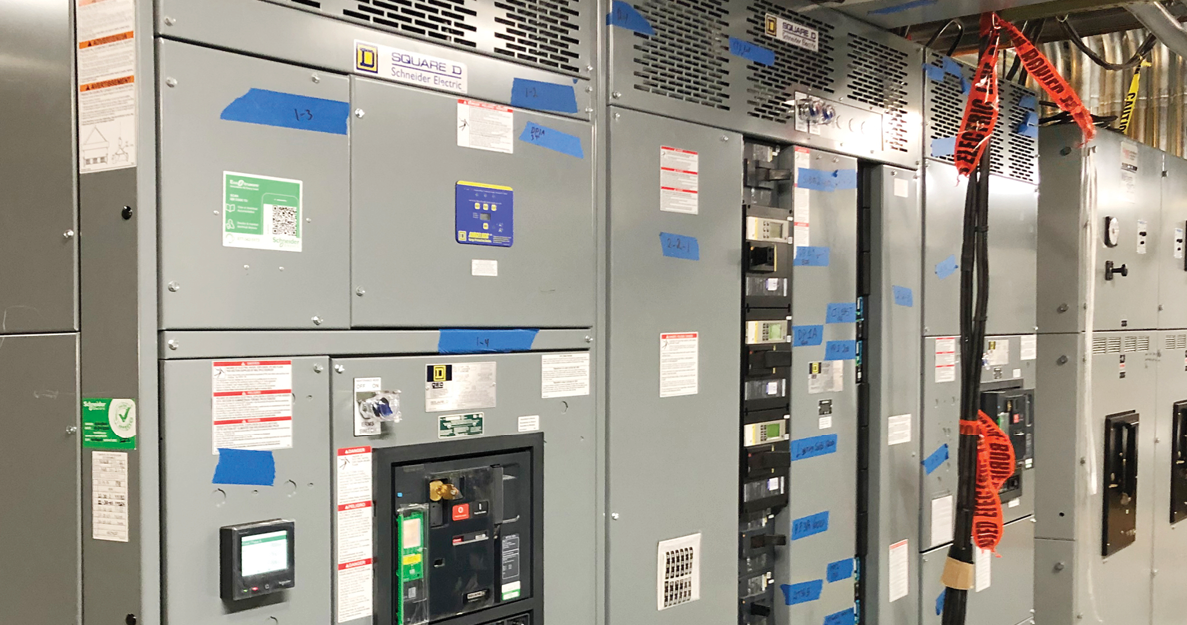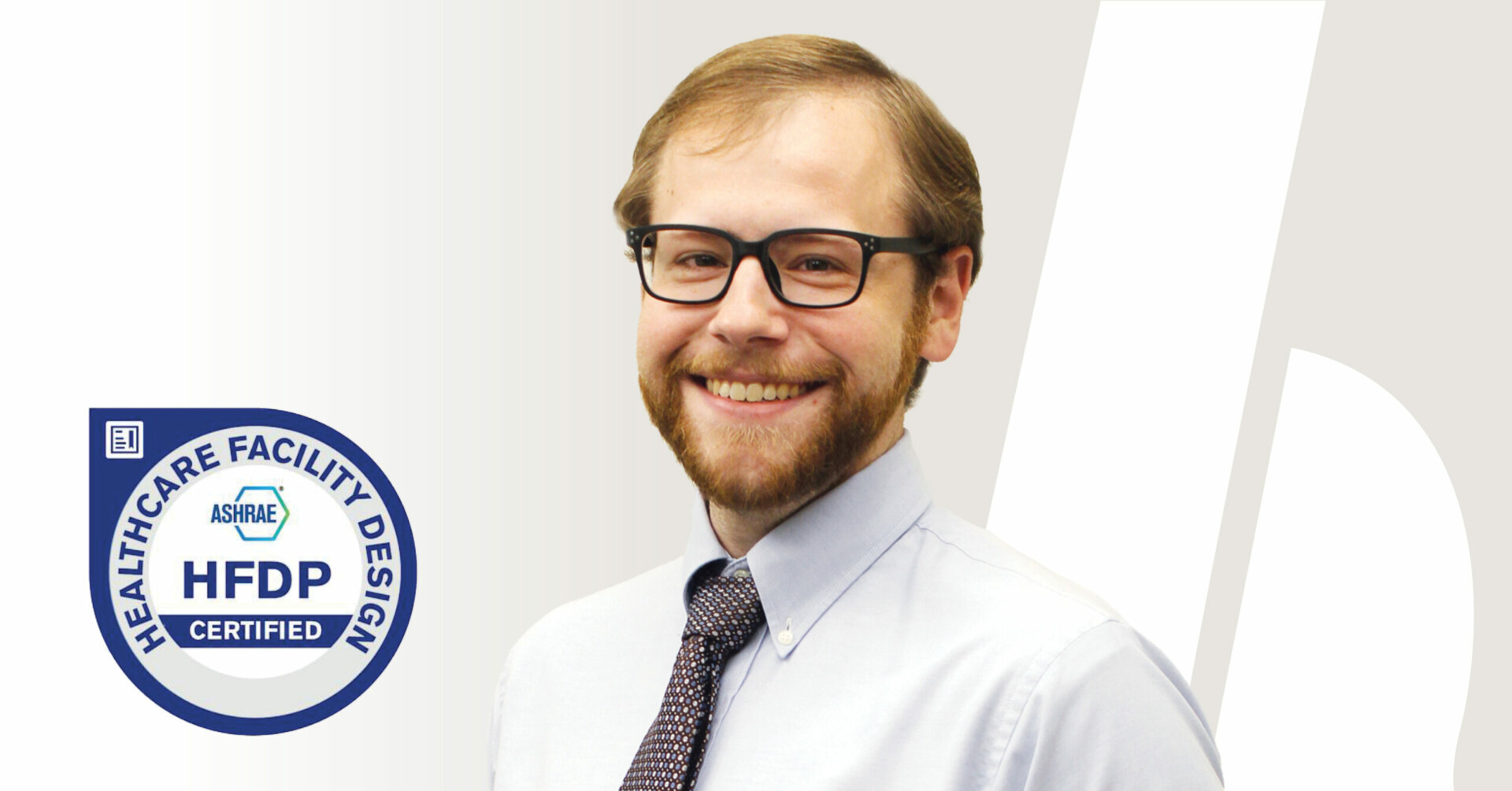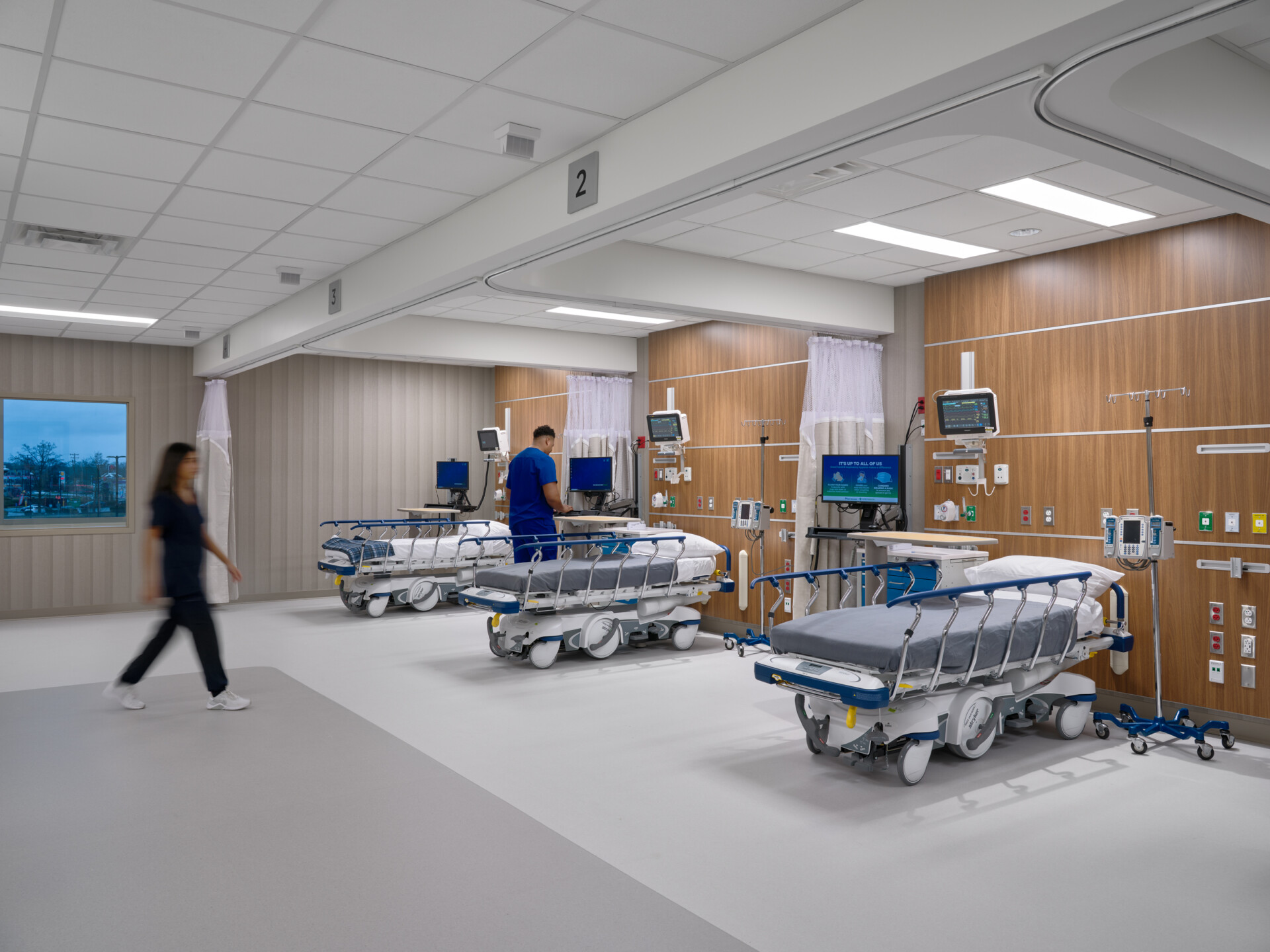
Behind every highly efficient healthcare facility lies a web of strategic decisions. Michael McCollum, Project Manager and Associate Principal with HEAPY’s Healthcare practice, has spent 17 years untangling these healthcare planning complexities. In this Q&A, he reveals how facility managers can shift from reactive troubleshooting to proactive planning, paving the way for more resilient and adaptable healthcare environments.
What’s the biggest challenge you see healthcare facilities facing when it comes to infrastructure decisions?
The biggest challenge we see is the trap of reactive maintenance – facilities finding themselves constantly putting out fires, replacing equipment in a rush without considering long-term implications. This leads to a cycle of inefficiency and wasted resources.
For example, we’ve seen cases where a hospital rushes to replace a broken air handling unit, only to realize months later during a renovation that the new unit is undersized because of updated air change requirements. This reactive decision-making can lead to substantial financial waste and operational inefficiencies.
How does this reactive approach impact patient care and staff retention?
The impact can be significant. Outdated or poorly planned infrastructure can directly affect the work environment and quality of care. We’ve seen instances where surgical teams have considered leaving for other hospitals due to inadequate facility environments. This puts enormous pressure on facility managers to make decisions that not only address immediate needs but also anticipate future requirements. From a patient perspective, if a highly skilled surgeon leaves due to facility inadequacies, patients either settle for less experienced surgeons or face extended wait times at other hospitals.
What steps can facility managers take to break free from this reactive cycle?
The key is shifting towards a more proactive, forward-thinking approach. First and foremost, it’s crucial to establish a comprehensive baseline for your current infrastructure. This means really understanding what you have, its condition, and how it aligns with current and future needs. Then, you want to capitalize on what we call “generational opportunities.” These are those major infrastructure upgrades that will impact your facility for decades. When these opportunities arise, it’s vital to consider future energy trends, regulatory changes, and technological advancements.
Another important step is prioritizing efficiency and sustainability. We need to focus on maximizing the efficiency of every unit of energy brought onto campus, whether through high-efficiency equipment, renewable energy sources, or energy storage technologies. It’s also crucial to look beyond upfront costs and analyze life cycle costs. Sometimes, a higher initial investment can lead to significant long-term savings.
Lastly, staying informed about future trends is essential. The healthcare industry is constantly evolving, and what’s standard practice today might be obsolete in a few years. Staying up to date with emerging technologies, energy trends, and regulatory changes helps you make better decisions to prepare for the future and reduce risks.
How can facility managers make the case for these proactive investments, especially when faced with budget constraints?
A: It’s important to provide a clear, data-driven picture of the facility’s current state and future needs. At HEAPY, we use what we call a Campus Asset Management Plan (CAMP), which is a comprehensive facility assessment and master plan that can help healthcare organizations plan strategically for their entire campus. The data not only shows our team the age of the equipment but also helps prioritize investments by assessing risk and overall impact. This can create a compelling case for financial and operational leaders to invest in infrastructure proactively – before it breaks!
Additionally, it’s important to explore various funding options. Many healthcare organizations are unaware of the diverse funding opportunities available to them. Our team at HEAPY offers expert guidance to help identify and secure additional funding through grants, energy performance contracting, and other innovative financing mechanisms. This can make large-scale infrastructure projects more feasible when you have limited capital.
You mentioned prioritizing investments based on risk and impact. Can you elaborate on what this means in practice?
Certainly. We take a holistic approach to healthcare planning – assessing risk and impact by evaluating the criticality of each infrastructure component. This includes factors like patient safety, regulatory compliance, operational impact, and financial implications.
For instance, an aging HVAC system in an operating room poses a much higher risk compared to one in an administrative area. We also look at how well current systems can adapt to future needs and their energy efficiency. It’s about making informed decisions that maximize patient care, compliance, operational efficiency, and long-term sustainability.
Looking ahead, what do you think healthcare facility managers will wish they had done differently 30 years from now?
I believe they’ll wish they had invested more in flexible, adaptable systems capable of incorporating new technologies and meeting changing regulatory requirements. They’ll recognize the value of prioritizing energy efficiency and sustainability, not just for environmental reasons, but for the significant long-term cost savings.
The facilities that will thrive in the future are those that break free from reactive maintenance cycles and embrace a proactive, forward-thinking approach to healthcare planning and infrastructure investment. It’s about creating resilient, adaptable spaces that can evolve with advancing medical technologies and changing healthcare needs. Healthcare organizations that plan for the future will be more adaptable and competitive compared to their peers.
Any final advice for healthcare facility managers looking to make more forward-thinking decisions?
Start with understanding where you are. Conduct a thorough assessment of your current infrastructure and regulatory standing. Then, look ahead. Consider the big picture: How does each decision fit into your campus master plan, your energy goals, and the future of healthcare delivery?
Also, don’t be afraid to seek help. Partnering with an outside expert can provide valuable insight into planning, engineering, and even funding strategies. Having a third-party validated assessment or plan can also lay out a business case that will help persuade leadership to invest sooner rather than later.
Remember, every infrastructure decision you make today is shaping the future of your healthcare facility. Make choices you’ll be proud of decades from now.
As part of our series for National Health Care Facilities and Engineering Week, we recognize the vital role that facilities experts play in ensuring safe and efficient environments for all patients, residents, visitors and staff within hospitals. The path to a future-ready healthcare facility begins with informed decisions and trusted partnerships. Visit our healthcare page to learn more about how HEAPY’s approach can improve your campus for years to come.





